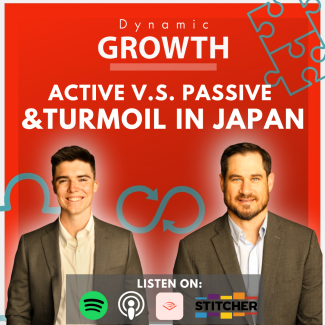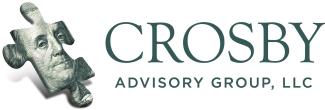
Active vs Passive Invetsing & Turmoil in Japan
The last couple of weeks have been filled with forward-looking planning! Our clients received their quarterly investment summaries, and the marketing advisory side of our business spent some time in Germany! Carly and her team are helping a multinational company create its marketing strategy and plan. It’s a good reminder that now is the time to make sure your customers are satisfied – invest in your brand, message, and experiences. Need help? Give us a call!
We’ve talked before about passive and active investing and this market only continues to remind us how important it is to stay in the market, to pay attention, and to do your research. When the market turns – one thing is for sure – it will happen extremely fast. The active manager has several advantages in a down market. In fact, when we compare our models to the S&P portfolio, we are doing better and in some cases by a significant margin. The ability to hold cash, inverse ETFs and non-correlated assets can make a big difference in your portfolio’s returns when managing a bear market.
What asset class surprised us most in 2022?
Stocks? Ehh not really! We would expect to see stocks struggle in a bear market. Bonds, however, are another story. The bond market was shockingly bad this year. Speaking of shocks, if you haven’t noticed, money markets are paying 2-3% interest! Do yourself a favor and give this short-term solution a hard look if you are losing sleep at night.
Some tips for navigating the market
Over the coming weeks, don’t be surprised if you hear analysts talk about predicting the bottom. We’ve reached a point in time where investors are closely studying behaviors so they can accurately time the bottom – which means there’s potential for big returns. Pay attention because it often turns quickly. Here are a couple of things to watch for:
- As evident by the double-digit YoY decline in the TLT ETF, long-term treasuries are most affected by interest rate increases. Generally, you should steer clear of these kinds of investments until you start to see interest rates stabilize.
- Watch unemployment – the number still looks pretty stable and until that changes, rates will likely keep hiking until inflation gets under control.
- On the contrary, you might have more time than you think. Elon Musk recently spoke out and said he believes it could be spring 2024 before we emerge from this, and Ray Dalio warned that returns could be flat after adjusted for inflation over the next 5 years.
Turmoil in Japan
The Bank of Japan has a long history of yield curve control. What exactly does that mean? Yields are usually determined by the market but in this case, let’s look at bond sales in Japan. If an investor sells a bond, the bank will then buy as many bonds as it takes to peg the yields to a specific amount. As a result of their fixed yield curve, since 2016 Japan has seen only 1.8% inflation. Recently, we’ve seen a couple of shifts in the Japanese market – including:
- The Yen has fallen to a 32-year low against the Dollar
- YTD Japan has depleted 10% of their foreign reserves
These recent drops are causing speculations that the Bank of Japan may be stepping in to try and further control the yields. We’ve been highlighting regional dynamics happening because of crisis situations in energy, fertilizer (and therefore food), supply chain, and more. All of this impacts the global economy as industries are interconnected more and more. Pay close attention – it’s hard to foresee what will come next.
Please note: This content is not a direct recommendation for investment. Investing involves risk including the potential loss of principal. Not all investments are suitable for all people. Crosby Advisory Group, LLC is a registered investment advisor in Ohio, Florida, and Texas.

